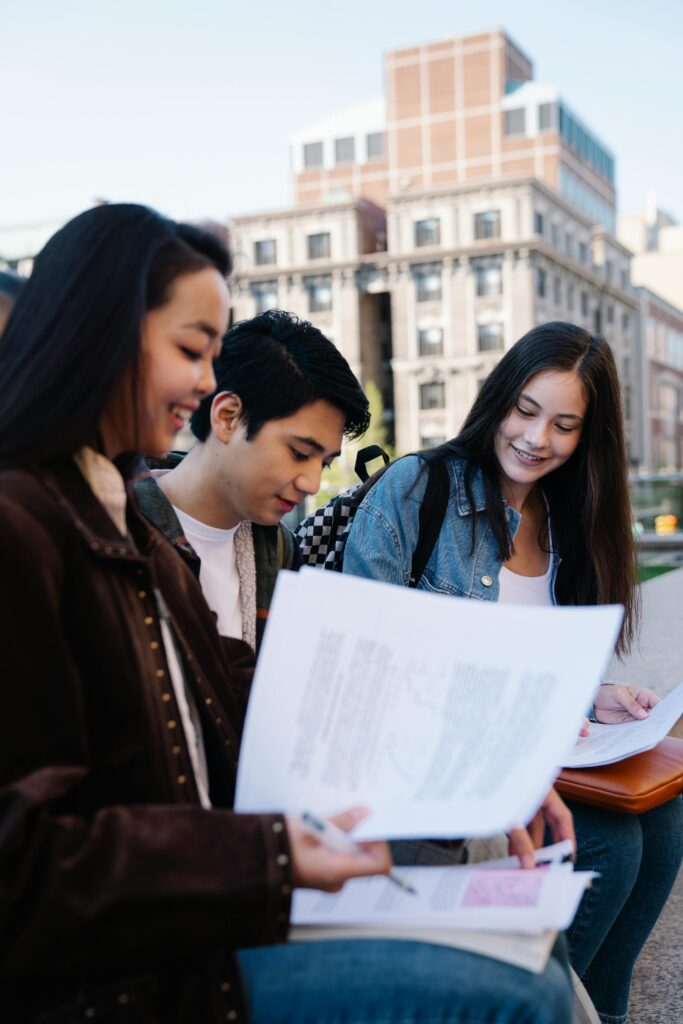
Outline of the Article
Essential Documents Checklist for International Student Applications
Introduction
- Why Documentation Matters in Student Applications
- How Missing One Document Can Derail Your Dreams
Academic Records
- Transcripts and Mark Sheets
- Certified Copies and Translation Requirements
- Certified Copies and Translation Requirements
- Certificates and Diplomas
- High School, Undergraduate, or Postgraduate Documents
- High School, Undergraduate, or Postgraduate Documents
English Language Proficiency
- Commonly Accepted Tests
- IELTS, TOEFL, PTE, Duolingo
- IELTS, TOEFL, PTE, Duolingo
- Minimum Scores Required by Country or Institution
Standardized Test Scores
- GRE, GMAT, SAT, ACT
- When and How to Submit
Passport and Identification
- Valid Passport
- National ID or Birth Certificate (if needed)
Statement of Purpose (SOP)
- What Makes a Great SOP?
- Common Mistakes to Avoid
Letters of Recommendation
- Who Should Write Them?
- How Many Do You Need?
Proof of Financial Support
- Bank Statements
- Sponsor Letters
- Affidavit of Support
Resume or Curriculum Vitae (CV)
- Key Information to Include
- Tailoring Your CV for Academic Purposes
Application Forms
- University-Specific Forms
- Government Application Portals
Health and Immunization Records
- Vaccination Requirements
- Health Insurance Documents
Visa Documentation
- Student Visa Application Form
- Visa Interview Documents Checklist
Portfolio (for Creative Courses)
- What to Include
- Presentation Tips
Additional Supporting Documents
- Work Experience Certificates
- Research Papers or Publications
Tips for Organizing Your Documents
- Creating a Checklist
- Digital vs. Physical Copies
Conclusion
- Wrapping Up Your Application Package
FAQs
Essential Documents Checklist for International Student Applications
Introduction
So, you’ve decided to study abroad—awesome choice! But before you can hop on a plane and chase those academic dreams, there’s a mountain of paperwork waiting for you. And let me tell you, missing even one important document can throw everything off track. That’s why having a complete checklist is your best friend in this journey.
Academic Records
Transcripts and Mark Sheets
Your academic transcripts are like your report cards on steroids—they show all the courses you’ve taken, the grades you received, and sometimes even your GPA.
Certified Copies and Translation Requirements
Universities usually want certified copies (not the originals) and if your documents aren’t in English, they’ll need to be translated by a certified translator. Don’t wait till the last minute to get this done!
Certificates and Diplomas
You’ll also need your graduation certificates—be it from high school, undergrad, or postgrad. Again, if these aren’t in English, translations are a must.
English Language Proficiency
Commonly Accepted Tests
If English isn’t your first language, you’ll need to prove you can handle classes taught in English. Most schools accept:
- IELTS
- TOEFL
- PTE Academic
- Duolingo English Test (yes, it’s becoming popular too!)
Minimum Scores Required by Country or Institution
Check with each university’s website, because a school in the U.S. might want an IELTS score of 6.5, while one in Canada might ask for a 7.0.
Standardized Test Scores
GRE, GMAT, SAT, ACT
Depending on the course and country, you might need one of these:
- GRE (for grad school in the U.S.)
- GMAT (for business programs)
- SAT or ACT (for undergrad in the U.S.)
When and How to Submit
Some schools want scores sent directly from the testing organization, so plan ahead and leave time for delivery.
Passport and Identification
Valid Passport
This one’s a no-brainer. Your passport should be valid for at least 6 months beyond your intended stay.
National ID or Birth Certificate (if needed)
Some universities or visa offices may ask for additional ID proof, especially during the visa process.
Statement of Purpose (SOP)
What Makes a Great SOP?
This is your chance to shine! Talk about your goals, why you chose that university, and what makes you unique.
Common Mistakes to Avoid
Don’t make it generic. Avoid clichés and never, ever copy someone else’s SOP.
Letters of Recommendation
Who Should Write Them?
Pick teachers, professors, or employers who actually know you and can speak about your skills.
How Many Do You Need?
Usually 2–3, but again—check with the university.
Proof of Financial Support
Bank Statements
You’ll need to show you can afford tuition and living costs—usually by providing a 3–6 month bank statement.
Sponsor Letters
If a parent or someone else is paying for your studies, a sponsor letter with their financial documents is needed.
Affidavit of Support
This legal document states that your sponsor will financially support you while you study abroad.
Resume or Curriculum Vitae (CV)
Key Information to Include
Include your academic background, work experience, achievements, and skills relevant to the course.
Tailoring Your CV for Academic Purposes
Make it formal, concise, and education-focused—this isn’t your job-seeking resume!
Application Forms
University-Specific Forms
These are available on each school’s admission portal. Fill them out completely and honestly.
Government Application Portals
In countries like Australia or the UK, you may also need to apply through a centralized system like UCAS or UAC.
Health and Immunization Records
Vaccination Requirements
Many universities ask for proof of vaccinations like MMR, COVID-19, and Hepatitis B.
Health Insurance Documents
Some schools require you to buy their insurance plan; others let you show your own.
Visa Documentation
Student Visa Application Form
Each country has its own visa form—like the F-1 for the U.S. or the Subclass 500 for Australia.
Visa Interview Documents Checklist
This often includes:
- Acceptance letter
- Financial proof
- Passport
- Visa fee receipt
- Academic documents
- Language test scores
Portfolio (for Creative Courses)
What to Include
If you’re applying for art, design, or architecture, your portfolio is your ticket in. Include your best work—neatly organized.
Presentation Tips
Go for quality over quantity, and make sure everything is well-documented with titles and short descriptions.
Additional Supporting Documents
Work Experience Certificates
Some programs require or prefer applicants with relevant work experience.
Research Papers or Publications
If you’ve written or contributed to any academic publications, show them off!
Tips for Organizing Your Documents
Creating a Checklist
Make a personalized checklist based on your target schools and countries.
Digital vs. Physical Copies
Keep both. Digital versions for quick uploads and backups, and physical copies for interviews or consulate visits.
Conclusion
Getting your documents in order may not be the most exciting part of applying to study abroad—but it’s absolutely crucial. A single missing file can delay or even derail your application. So take the time to prepare, organize, and double-check everything. When your paperwork is airtight, you can focus on the exciting stuff—like packing your bags and preparing for an unforgettable international experience!
FAQs
Q1: Can I submit scanned copies instead of originals?
Yes, but they must be clear and sometimes certified. Always check university requirements.
Q2: Do I need to get my documents notarized?
Some universities and visa offices do require notarized copies—check ahead to be safe.
Q3: What if my documents are in a language other than English?
You’ll need official translations from a certified translator.
Q4: How early should I prepare my documents?
Start at least 6–8 months in advance to avoid last-minute stress.Q5: Is it okay to use the same SOP and recommendation letters for multiple applications?
You can, but it’s better to tailor each one to the specific university or course.

